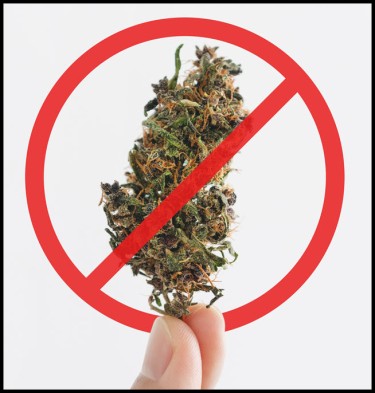Cannabis News
Three Myths and Three Facts on the HUGE Marijuana Rescheduling Recommendation
Published
1 year agoon
By
admin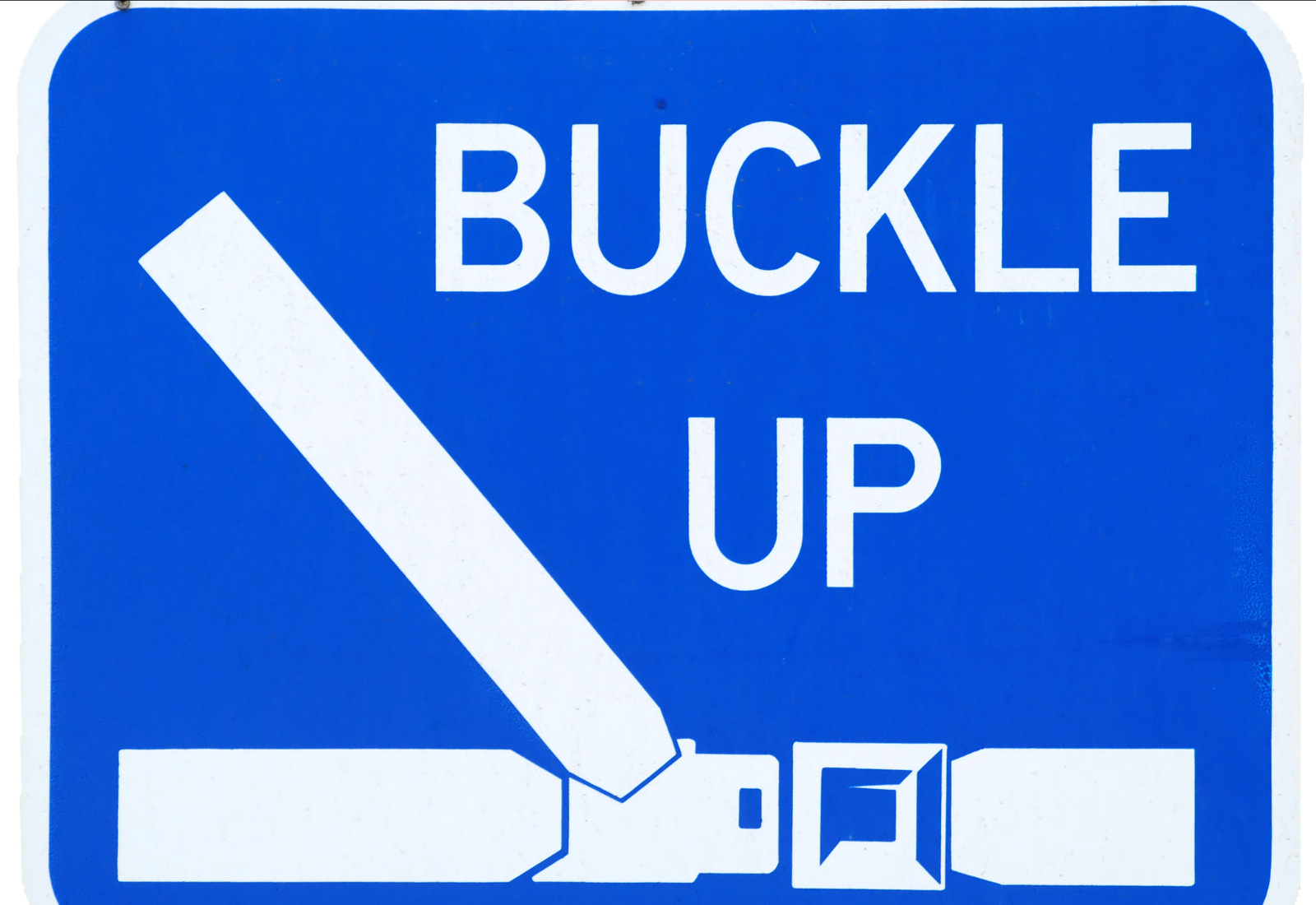
Huge news yesterday. Huge! The U.S. Department of Health and Human Services (HHS) has officially recommended that marijuana be rescheduled, from Schedule I to Schedule III of the federal Controlled Substances Act (CSA). This means that the country’s top health agency has finally conceded that cannabis has medical value, and isn’t a drug of abuse on par with fentanyl or heroin. We haven’t yet seen the HHS letter so we’re not sure what changed from the last “medical and scientific” evaluation undertaken by the Food and Drug Administration (FDA) and HHS in 2015, but hey, we’ll take it.
Griffen Thorne in our office recently predicted that administrative action, and not Congressional action, would be the course of reform at hand. Kudos to him and others who shared that view. Rescheduling is not the best possible outcome, however. It’s really not. We’d like to see marijuana descheduled entirely, like alcohol or tobacco– which are demonstrably harmful substances. Still, moving marijuana down to Schedule III would be monumental progress.
The internet is full of hot takes on yesterday’s news, of course. They range from 0% accurate to 100% accurate. This blog post aims to dispel a few myths around rescheduling, and trot out some interesting facts.
Myth 1: It’s a done deal
It’s not a done deal! This all looks pretty good right now, but the Drug Enforcement Administration (DEA) has final say on whether to schedule or reschedule marijuana following the HHS recommendation. As an HHS spokesperson explained:
“While HHS’s scientific and medical evaluation is binding on DEA, the scheduling recommendation is not. DEA has the final authority to schedule a drug under the CSA (or transfer a controlled substance between schedules or remove such a drug from scheduling altogether) after considering the relevant statutory and regulatory criteria and HHS’ scientific and medical evaluation. DEA goes through a rulemaking process to schedule, reschedule or deschedule the drug, which includes a period for public comment before DEA finalizes the scheduling action with a final rulemaking.”
Here, the spokesperson is paraphrasing the CSA at 21 USC § 811(b). That CSA section references the Attorney General (AG) rather than DEA (and refers to the AG only as a “he”, embarrassingly). In any case, the DEA Administrator reports to the AG (through the Deputy AG). The HHS spokesperson is ultimately correct that DEA will have to instate rulemaking. The AG could then reschedule.
So, will DEA actually commence the rulemaking process? It seems inconceivable that DEA wouldn’t, but DEA has taken many bad positions on controlled substances over the years. This includes ignoring orders from its own administrative law judges to reschedule marijuana back in the day. Without having seen the HHS letter, I strongly believe that DEA will commence rulemaking to reschedule marijuana to III. Biden himself requested this HHS review, after all, for better or worse.
A couple of other, very important questions include: Will DEA drag its feet? How long will the rulemaking process take? What will the proposed rule actually say? How much testimony will be entertained, and from whom? Will the rulemaking be litigated? I could go on. Overall this is not a done deal, and although it feels imminent, this may take some time.
Myth 2: State marijuana businesses would be clear of federal enforcement
Nothing is going to change here, legally speaking. Practically speaking, same story: not much will change on federal enforcement exposure. This is because moving marijuana to Schedule III would have no effect on the federally verboten status of state-licensed marijuana businesses. These businesses would still be in violation of federal law if the AG reschedules, similar to any other business selling Schedule III drugs like methamphetamines or anabolic steroids. For a fuller analysis, check out this old chestnut from 2016.
But would moving marijuana to Schedule III make the risk of federal enforcement even more unlikely? I suppose. Truth be told, we haven’t worried much about federal law enforcement against state-licensed cannabis businesses since the days of notorious cannabis dingus Jeff Sessions. Moving the plant to Schedule III can’t hurt, though.
The only way state-licensed cannabis businesses will become insulated from all risk of federal enforcement is for marijuana to be removed from the CSA entirely, as half of Congress has voted to do and as Senators have recently petitioned the Attorney General to do (citing yours truly). Let’s hope we get there eventually.
Myth 3: Marijuana businesses would be taxed like other businesses
This is almost correct. If marijuana goes to Schedule III, the margins-crushing statute known as IRC § 280E would not apply, and the cannabis industry would change forever. That said, state-level taxation of cannabis will not change. Or, it may change for the worse, as states feel emboldened to raise cannabis-related taxes in the absence of § 280E.
Do states tax cannabis heavily? Yes they do. Although several states have passed laws designed to mute the effects of § 280E at the state return level, most states (and many cities and counties) levy significant taxes on cannabis in some form or other. These taxes usually accrue at the point of sale and are borne by the consumer. They are designed to raise prices, however, and place downward pressure on sales. For that reason, cannabis businesses tend to oppose them.
Still, I cannot emphasize enough that removal of § 280E would change the industry forever. Having worked with cannabis businesses for 13 years, I view taxation as the largest affront to marijuana businesses— more than banking access, intellectual property protection problems, lack of bankruptcy, you name it. This would be HUGE.
Fact 1: Marijuana rescheduling would give industry more leverage with investors
The cannabis industry is depressed and starved for capital. The last big investment spike came in on the COVID wave; since that point equity has been cheap and investors hold all the cards. With § 280E gone, many struggling cannabis outfits should begin producing better financial statements. The most efficient cannabis businesses would look sexy as all get-out.
Cannabis businesses also would have an easier time explaining their models, and we’d see fewer people scheming to do things like move to Puerto Rico or build these types of rats’ nests. It is also worth noting that U.S. small business lending has held up recently despite higher costs of credit. More of those available dollars could flow to cannabis businesses. They would have more value overnight (the pubcos already got a jolt), and should be able to generate financial statements on par with other industries.
Fact 2: Marijuana rescheduling wouldn’t fix the banking thing
The banking thing will not be fixed. At Schedule III, marijuana would still be a controlled substance and state-licensed businesses would still be “trafficking” in a controlled substance, contrary to federal law.
As someone who has advised many banks and credit unions on cannabis, including the federal government, I’m here to tell you that the analysis for financial institutions won’t fundamentally change. We need the perpetually stalled SAFE Banking Act or some other act of Congress to fix this, so long as cannabis remains on any CSA schedule. Even if marijuana is moved to Schedule III, cannabis businesses would be stuck with current options (which aren’t as bad as advertised.)
Fact 3: Marijuana would become easier to research, and subject to the morass of health care regulation (kind of)
These are probably two different facts. Oh well. Due to its Schedule I status, marijuana has always been incredibly difficult to research (see: How to Study Schedule I Controlled Substances). That paradigm changed a bit with passage of the Medical Marijuana and Cannabidiol Research Expansion Act last July, but a move to Schedule III would open the floodgates. Substances on lower schedules are simply more accessible from a DEA licensing perspective.
Related to this, the plant would “officially” have medical value if placed on Schedule III. That would be great and not so great. As a law firm with a substantial ketamine practice, for example, we’ve seen how the morass of health care regulation is brought to bear on controlled substances fit for medical use (ketamine is also a Schedule III drug). Granted, ketamine is an FDA approved drug, but the classification of a substance as something with medical value opens the door to any number of opportunities for medical application and attendant regulation.
The cannabis industry has always been worried about Big Pharma moving in. That fear has been somewhat irrational in my view, especially given the size and staying power of the non-pharmaceutical market. With a Schedule III placement, however, we would see more FDA drug development opportunities, which means more FDA drugs, which means off-label uses, etc. Expect to see a dual-track market for cannabis going forward, including an intensive regulatory structure.
Wrapping up on marijuana rescheduling
Again, really great news. In the absence of descheduling we’ll gladly take it. Keep your fingers crossed for a smooth and speedy process. In the meantime, we’ll continue to share thoughts and track this crucial development, as I’m certain we’ll have much more to say in coming weeks and months. For now, it’s time to celebrate!
You may like
-


Lawsuit Says DEA Acting In Bad Faith Over Marijuana
-


Autoimmune Conditions Are Rising Fast in American Medicine, Can Cannabis Help?
-


Hemp and the New Senate Farm Bill
-


The Red Wall Blocking Marijuana Legalization in America, Real or Imagined?
-


Minnesota Office of Cannabis Management Issues Rejections to Majority of Social Equity Applicants
-


Find LivWell in Colorado
Cannabis News
Autoimmune Conditions Are Rising Fast in American Medicine, Can Cannabis Help?
Published
6 hours agoon
November 21, 2024By
admin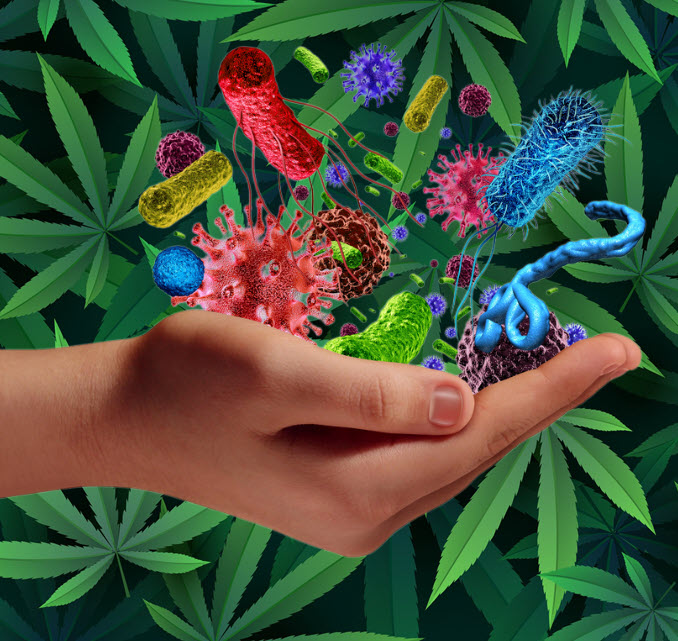
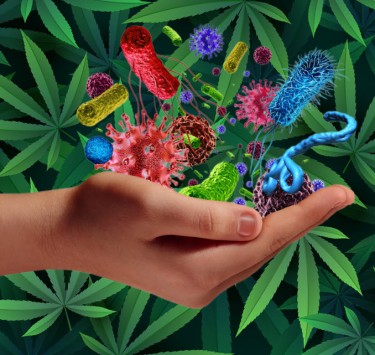
Why Are Autoimmune Conditions On The Rise? And How Cannabis Can Help
Autoimmune diseases refer to a group of medical conditions that occur as a result of the immune system attacking your own tissues.
In a normal human body, the immune system is responsible for protecting the body by producing antibodies that prevent toxins, cancer cells, and viruses from harming the body. However, when one is struck by an autoimmune disorder, the immune system is no longer able to distinguish the difference between dangerous cells and healthy cells. As a result, the healthy cells are attacked, too.
Today, we know of around 100 different kinds of autoimmune conditions. Some of the most common examples of autoimmune conditions include rheumatoid arthritis (RA), lupus, inflammatory bowel disease, celiac disease, Type 1 diabetes, multiple sclerosis (MS), and the Guillain-Barre syndrome (GBS) to name a few. Others include Graves’ disease, Hashimoto’s thyroiditis, psoriasis, and vasculitis.
According to the National Health Council, around 50 million Americans are affected by autoimmune diseases today. This is a conservative estimate, considering that several autoimmune conditions are tricky to treat and so many people go undiagnosed for long periods of time. It’s worrisome to note that there are more people developing autoimmune diseases these days, many of which have reached levels comparable to epidemics.
But cannabis can help!
How Cannabis Can Help Curb And Manage Autoimmune Diseases
Not one single cause is responsible for the alarming growth of autoimmune diseases, though there are several factors at play. While there isn’t just one cause we can point at, it’s certain the reasons lie in our environment. After all, human genetics haven’t changed significantly yet the chemicals, toxins, and pollutants in our food and everyday items have risen dramatically.
In addition, people are getting less sleep than ever; stress rates are through the roof, and people are constantly worried. There is a clear link between psychological stress and physical health as well as immunity, which is why it isn’t unusual – it’s even common – to see many autoimmune disease cases flare up after people experience severe stress caused by grief, an accident, job loss, or the death of a loved one. These highly stressful and traumatic conditions wreak havoc on the body’s immune response, causing inflammation all over the body.
Conventional treatments prescribed to treat autoimmune conditions are focused on taming inflammation; these usually include steroids but also some non-steroidal drugs. These drugs often come with unwanted side effects, but research has shown that cannabis can work with the endocannabinoid system through THC and CBD, as well as other cannabinoids, to simulate similar results. In one study for example, we can see the clear association of the endocannabinoid system for neurodegenerative and inflammatory processes seen in Multiple Sclerosis and Amyotrophic Lateral Sclerosis.
There has also been an increasing number of studies proving the efficacy of cannabis for treating several autoimmune conditions.
Cannabis For Multiple Sclerosis
Multiple sclerosis is one of the autoimmune conditions where a growing number of studies have come out supporting the therapeutic benefits of cannabis for. In a 2024 study, patients with multiple sclerosis reported several improvements in quality of life after using cannabis-based medical products (CBMPs). For the study, British investigators analyzed the impact of cannabis based medicinal products made from either oil or extracts in 141 patients who were enrolled in the UK Medical Cannabis Registry.
The researchers then analyzed the changes in patient outcomes after a month, then three and 6 months after. According to the patients themselves, they were able to sustain improvements in their mental and physical health after marijuana therapy.
“This case series demonstrates a potential association between the initiation of CBMPs and improved patient reported outcomes in sleep, anxiety, and general HRQoL [health-related quality of life] measures, over six months,” said the study authors. “Additional measures for HRQoL, including various physical and mental health subdomains, also exhibit improvements up to six months when compared to baseline,” the authors concluded.
In another study from 2023, patients with multiple sclerosis reported significant improvements in symptoms after cannabis use. For the study, researchers from the Dent Neurologic Institute in Buffalo, New York, analyzed the medical records of 141 patients with multiple sclerosis, who were also legally authorized to consume medical marijuana products. They then analyzed data from the patients after one up to 4 follow-up sessions after the initial session of cannabis therapy. Sixty-five percent of patients consumed 1:1 THC:CBD tinctures.
According to the authors: “The results of this study indicate that use of MC [medical cannabis] to alleviate symptoms of MS is largely efficacious, with improvement in pain (72 percent of patients), muscle spasticity (48 percent of patients), and sleep disturbance (40 percent of patients) frequently reported.”
“More than half of opioid users at baseline were able to either discontinue or decrease their opioid use after starting MC. The mean daily MME [morphine milligram equivalents] was significantly reduced from the initial visit (51 mg) to the last follow-up visit (40 mg). This is consistent with previous literature showing that MC legalization is associated with decreased opioid use and that MC use is associated with decreased opioid use in patients with chronic pain. These findings indicate that MC may represent an alternative analgesic to opioids for some patients,” they wrote.
Anecdotal Evidence
While more studies are needed to determine cannabis’ effect on other autoimmune conditions such as rheumatoid arthritis, we can rely on anecdotal evidence. In 2020, data from the medical journal, Rheumatology, revealed that patients who have this condition, along with those who have lupus and fibromyalgia, consume cannabis.
In fact, it was reported that marijuana was extremely common especially for patients with fibromyalgia. “In this meta-analysis, we found that one in six patients suffering from rheumatologic disease actively consumes cannabis, reducing pain reduction… A favorable effect of cannabis on pain in our meta-analysis reinforces the idea that cannabis could be used for analgesic purposes,” the authors concluded.
Conclusion
Cannabis is a safe and natural way to help prevent and treat the symptoms of autoimmune disease. It targets inflammation at its root, and is a proven natural way to help cope with stress, pain, insomnia, and inflammation all while protecting the brain. However, it’s important to ensure you medicate with clean, organic sources of marijuana.
AUTOIMMUNE AND CANNABIS, READ ON…

The U.S. Senate’s version of the Farm Bill finally landed this week. They’re calling it the Rural Prosperity and Food Security Act of 2024 (the “Senate bill”). The Senate bill follows on the House’s proposal, called the Farm, Food and National Security Act of 2024 (the “House bill”), offered in May. Neither the Senate bill nor the House bill would preempt state or Indian law regarding hemp or the regulation of hemp products. This means states and tribes will retain a lot of latitude in regulating hemp and hemp-derived products– which gets people fired up.
Aside from giving states some runway, the Senate bill and the House bill differ in key respects regarding hemp. Therefore, these august bodies must confer and reconcile their sundry proposals. That could happen in 2024, but seems more likely in 2025 when the new Congress convenes. As of this week, though, we finally have a framework.
The Senate Bill re-defines “hemp” and defines “industrial hemp”
Section 10016 of the Senate bill (“Hemp Production”) amends the definition of “hemp.” Hemp was defined in the 2018 Farm Bill and removed from the federal Controlled Substances Act (CSA), taking us on a truly wild ride. See: What Happened to Hemp? (“What Happened”). The Senate bill also gives us a definition for “industrial hemp.” Here are those definitions, with points of emphasis in bold:
(1) Hemp. The term “hemp” means (A) the plant Cannabis sativa L. and any part of that plant, including the seeds thereof and all derivatives, extracts, cannabinoids, isomers, acids, salts, and salts of isomers, whether growing or not, with a delta-9 total tetrahydrocannabinol concentration (including tetrahydrocannabinolic acid) of not more than 0.3 percent on a dry weight basis; and (B) industrial hemp.
(3) Industrial Hemp. The term “industrial hemp” means the plant Cannabis sativa L. if the harvested material (A) is only (i) the stalks of that plant, fiber produced from those stalks, or any other manufactured product, derivative, mixture, or preparation of those stalks (except cannabinoid resin extracted from those stalks); (ii) whole grain, oil, cake, nut, hull, or any other compound, manufactured product, derivative, mixture, or preparation of the seeds of that plant (except cannabinoid resin extracted from the seeds of that plant); or (iii) viable seeds of that plant produced solely for production or manufacture of any material described in clause (i) or (ii); and (B) will not be used in the manufacturing or synthesis of natural or synthetic cannabinoid products.
The new regime
Again, the definitional stuff in bold is what I want to emphasize.
First, the Senate bill keeps the THC threshold at 0.3 percent, which is an arbitrary number we’ve been advocating against for years. The Senate bill mirrors the House bill in this respect, though, so we are stuck with this, unless Ron Paul gets his way.
Second, the Senate bill keeps the 2018 Farm Bill’s total THC standard, including THCA. The House bill does this too. This was fairly predictable: in What Happened, I wrote that we could “expect the total THC standard to remain, which means that actual Delta-9 THC won’t be the only metric for calculating THC content.”
We’ve also explained on this blog that the 2018 Farm Bill and USDA rules mandate total THC testing on pre-harvest hemp batches, but do not mandate such testing on post-harvest hemp or hemp products. The Senate bill doesn’t change this paradigm, which means the “loophole” for gas station weed remains open. This proposal is a big win for opponents of the House bill’s “Miller Amendment,” which would narrow the definition of “hemp” to exclude intoxicating hemp-derived substances.
Third, the Senate bill introduces a new definition and framework for industrial hemp. The House bill does this too, albeit slightly differently. The idea here is to invite farmers to grow hemp for fiber and grain purposes, while freeing them from regulatory burdens with the Department of Agriculture and criminal exposure with the Department of Justice. More specifically, for “industrial hemp” growers, the Senate bill:
- removes background check requirements;
- instates “relaxed regulatory requirements” for sampling and inspection methodologies (which will need to be adopted by rule); and
- develops a certified seed program.
The Senate bill also makes any hemp producer ineligible to grow hemp for five years if that producer, “with a culpable mental state greater than negligence, produces a crop of hemp that is inconsistent with that license.”(Hint: use the seed program.) The proof standard here seems like it could be an issue, and even if anyone has been adjudicated as growing marijuana under the guise of hemp, Farm Bill ineligibility seems like a far-off concern.
Bottom line
The big takeaway for me is that the Senate bill leaves the door open for intoxicating hemp products, whereas the Miller Amendment to the House bill does not. Something’s gotta give. And it needs to happen soon, because we’re already long overdue. As I explained in a webinar last week, the Farm Bill deals with the nation’s entire food supply, not just hemp. Therefore, this is not like with the SAFE Banking Act, where we have a proposed law specific to cannabis that may or may not ever pass. The Farm Bill must pass, and soon.
Stay tuned and we’ll keep you updated on any major happenings. For more on this topic, check out our massive hemp and CBD archive, or these specific, recent posts:
Cannabis News
The Red Wall Blocking Marijuana Legalization in America, Real or Imagined?
Published
8 hours agoon
November 21, 2024By
admin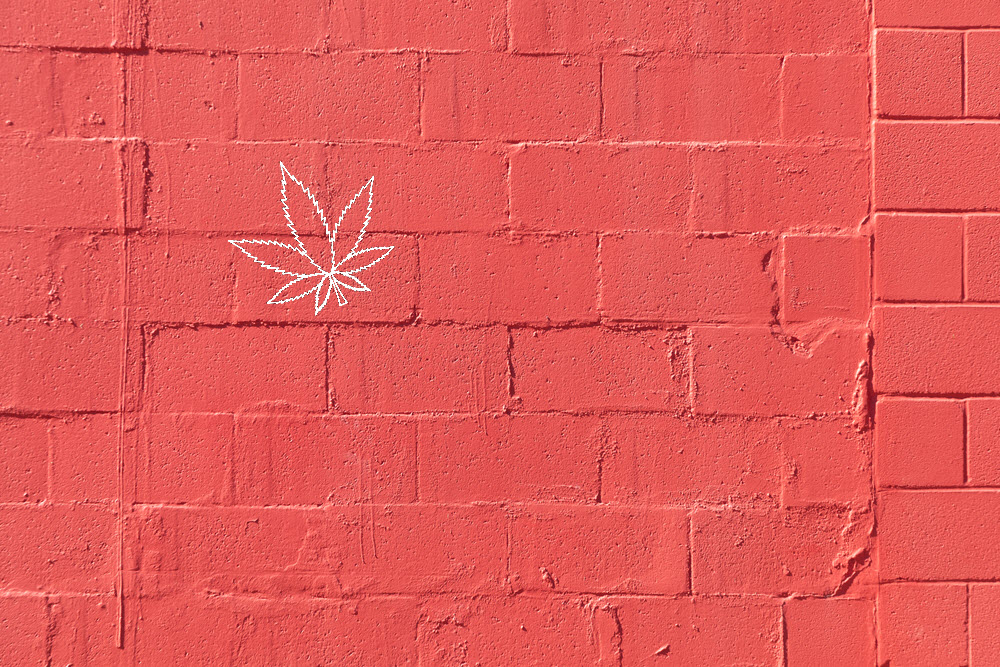

As the movement for marijuana legalization gains momentum across the United States, a significant barrier remains in place in many conservative states, forming what advocates and analysts have termed a “red wall.” This phenomenon highlights the stark divide between states that have embraced cannabis reform and those that continue to criminalize its use, particularly in areas where Republican leadership is firmly entrenched. This article will explore the current landscape of marijuana legalization, the factors contributing to this resistance, and the implications for consumers and advocates alike.
The Current State of Marijuana Legalization
Over the past decade, public opinion regarding marijuana has shifted dramatically. According to recent polls, approximately 68% of Americans support legalizing cannabis for recreational use. This shift has translated into legislative action, with 38 states and the District of Columbia allowing medical marijuana and 24 states legalizing it for recreational use. States like California, Colorado, and Illinois have set precedents with robust frameworks for both medical and recreational cannabis markets.
Despite this progress, a significant number of states remain resistant to change. As of 2024, there are still 20 states where marijuana is illegal for recreational use, many of which are governed by Republican majorities. This resistance is often attributed to a combination of political ideology, cultural attitudes, and concerns about public safety.
The Red Wall: A Political Barrier
The term “red wall” refers to the political landscape in conservative states where Republicans maintain control over both legislative chambers and the governor’s office—known as a trifecta. In these states, efforts to legalize cannabis face substantial obstacles due to party alignment and prevailing conservative values.
States such as Wyoming, Idaho, and Nebraska exemplify this red wall. Here, despite growing public support for legalization, lawmakers remain hesitant to advance legislation or allow ballot initiatives that would enable voters to decide on cannabis reform. The result is a patchwork of laws that leaves millions of Americans in conservative regions without access to legal cannabis.
Factors Contributing to Resistance
One of the primary reasons for the red wall against marijuana legalization is the deeply ingrained political ideology within conservative circles. Many Republican leaders view cannabis as a moral issue rather than a public health or economic one. This perspective is often rooted in traditional values that prioritize law and order over personal freedom.
Additionally, some conservative lawmakers express concerns about the potential societal impacts of legalization, including increased drug use among youth and impaired driving incidents. These fears can overshadow empirical evidence from states that have legalized cannabis, which often show no significant increase in youth usage or traffic accidents.
Cultural attitudes toward marijuana also play a significant role in shaping policy decisions in conservative states. In many regions, cannabis remains stigmatized as a dangerous drug associated with criminal behavior. This stigma can lead to fear-based policymaking that prioritizes prohibition over regulation.
Moreover, conservative communities may have strong ties to traditional industries such as agriculture and law enforcement that view marijuana legalization as a threat to their interests. These cultural dynamics create an environment where lawmakers are reluctant to support reform efforts that could alienate their constituents or undermine their political base.
Legislative Challenges
In addition to ideological resistance, practical legislative challenges further complicate efforts to advance marijuana legalization in conservative states. Many red wall states have stringent requirements for ballot initiatives or legislative proposals that make it difficult for advocates to gain traction.
For instance, some states require an exceptionally high percentage of signatures from registered voters to qualify for a ballot initiative. In Florida, a recent attempt to legalize recreational cannabis fell short of the required 60% supermajority needed for passage, despite receiving majority support from voters. Such hurdles can stifle grassroots efforts and limit opportunities for public input on cannabis policy.
Recent Developments in Red Wall States
Historically, ballot initiatives have been an effective strategy for advancing marijuana legalization in various states. However, this approach has faced increasing challenges in conservative strongholds. In North Dakota and South Dakota, recreational cannabis measures were defeated again in 2024 after previous attempts had also failed.
In South Dakota specifically, voters approved a legalization measure in 2020 only to see it challenged by state officials who argued it was unconstitutional. This led to protracted legal battles that ultimately stalled implementation efforts. Such experiences highlight how state officials can actively work against voter-approved measures when they conflict with prevailing political ideologies.
Legislative Efforts: Stalled Progress
In addition to ballot initiatives failing at the polls, legislative efforts in red wall states have also struggled to gain traction. For example:
-
Kansas: Despite growing support among residents for medical marijuana legalization, Republican lawmakers have repeatedly blocked proposals aimed at establishing a regulated medical program.
-
Kentucky: Efforts to legalize medical cannabis have faced significant hurdles in the state legislature despite bipartisan support among constituents.
-
Wisconsin: Governor Tony Evers has proposed measures to legalize both medical and recreational marijuana; however, these proposals have consistently met resistance from Republican-controlled legislative chambers.
These examples illustrate how even when there is public support for reform, entrenched political opposition can thwart progress.
Implications for Consumers and Advocates
Continued Criminalization
The persistence of the red wall means that millions of Americans living in conservative states continue to face criminal penalties for cannabis use. Individuals caught with small amounts of marijuana can face fines or even jail time disproportionately affecting marginalized communities.
Moreover, the lack of legal access forces consumers into unregulated markets where product safety cannot be guaranteed. This situation poses health risks associated with untested products and contributes to ongoing cycles of criminalization rather than promoting responsible use through regulation.
Economic Consequences
The economic implications of maintaining prohibition are significant as well. States that refuse to legalize cannabis miss out on substantial tax revenue generated from regulated markets. For instance:
-
Colorado: Since legalizing recreational marijuana in 2014, Colorado has generated over $1 billion in tax revenue from cannabis sales.
-
California: The state’s legal cannabis market is projected to generate billions annually in tax revenue—money that could be used for education, infrastructure, and public health initiatives.
In contrast, conservative states that uphold prohibition forego these potential revenues while also incurring costs associated with enforcing drug laws and managing related criminal justice issues.
Advocacy Strategies Moving Forward
Given the challenges posed by the red wall, advocates for marijuana legalization must adapt their strategies if they hope to make progress in conservative states:
The Future of Marijuana Legalization
As we look ahead, it is clear that overcoming the red wall will require persistent effort from advocates committed to changing hearts and minds within conservative states. While progress may be slow and fraught with challenges, shifts in public opinion suggest that change is possible.
The ongoing conversation surrounding federal rescheduling under President Biden’s administration could also influence state-level policies. If cannabis were moved from Schedule I to Schedule III under federal law—a move some speculate could happen under future administrations—states might feel pressured to reconsider their own prohibitive laws.
Ultimately, navigating this complex landscape will require resilience from advocates who understand both the political realities at play and the potential benefits of legalization for consumers and society as a whole.
Conclusion
The “red wall” against marijuana legalization represents a formidable barrier within many conservative states where outdated perceptions about cannabis persist alongside strong political opposition. As public opinion continues to evolve nationally favoring greater acceptance of both medical and recreational use advocates must adapt their strategies accordingly.
By building coalitions across diverse groups and focusing on education at the community level while pursuing incremental reforms where possible, advocates can work toward dismantling this barrier over time. The journey toward comprehensive marijuana reform may be long and challenging; however, with sustained effort and commitment from supporters across all sectors of society including those residing behind the red wall progress is achievable.
CONSERVATIVES BLOCKING CANNABIS BILLS?, READ ON…

Lawsuit Says DEA Acting In Bad Faith Over Marijuana

Autoimmune Conditions Are Rising Fast in American Medicine, Can Cannabis Help?

Hemp and the New Senate Farm Bill

The Red Wall Blocking Marijuana Legalization in America, Real or Imagined?

Minnesota Office of Cannabis Management Issues Rejections to Majority of Social Equity Applicants

Find LivWell in Colorado

Find Verilife in Massachusetts

Find Verilife in Illinois

Find Verilife in New York

Ohio Non-Medical Cannabis is available at Verilife

Distressed Cannabis Business Takeaways – Canna Law Blog™

United States: Alex Malyshev And Melinda Fellner Discuss The Intersection Of Tax And Cannabis In New Video Series – Part VI: Licensing (Video)

What you Need to Know

Drug Testing for Marijuana – The Joint Blog

NCIA Write About Their Equity Scholarship Program

It has been a wild news week – here’s how CBD and weed can help you relax

Cannabis, alcohol firm SNDL loses CA$372.4 million in 2022

A new April 20 cannabis contest includes a $40,000 purse

Your Go-To Source for Cannabis Logos and Designs

UArizona launches online cannabis compliance online course
Trending
-

 Cannabis News2 years ago
Cannabis News2 years agoDistressed Cannabis Business Takeaways – Canna Law Blog™
-

 One-Hit Wonders2 years ago
One-Hit Wonders2 years agoUnited States: Alex Malyshev And Melinda Fellner Discuss The Intersection Of Tax And Cannabis In New Video Series – Part VI: Licensing (Video)
-

 Cannabis 1012 years ago
Cannabis 1012 years agoWhat you Need to Know
-

 drug testing11 months ago
drug testing11 months agoDrug Testing for Marijuana – The Joint Blog
-

 Education2 years ago
Education2 years agoNCIA Write About Their Equity Scholarship Program
-

 Cannabis2 years ago
Cannabis2 years agoIt has been a wild news week – here’s how CBD and weed can help you relax
-

 Marijuana Business Daily2 years ago
Marijuana Business Daily2 years agoCannabis, alcohol firm SNDL loses CA$372.4 million in 2022
-

 California2 years ago
California2 years agoA new April 20 cannabis contest includes a $40,000 purse





